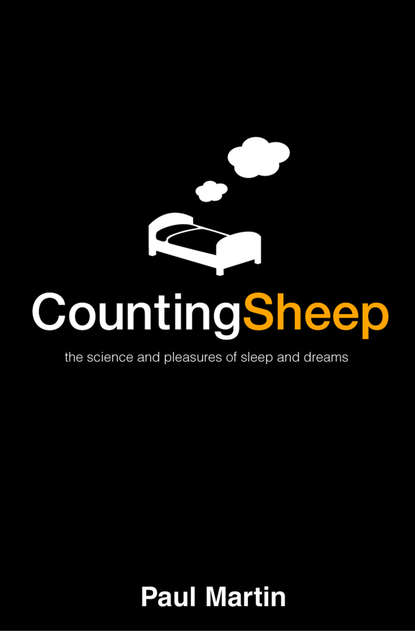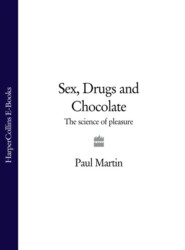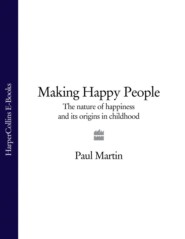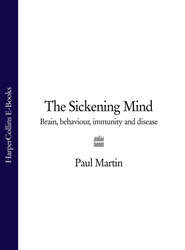По всем вопросам обращайтесь на: info@litportal.ru
(©) 2003-2024.
✖
Counting Sheep: The Science and Pleasures of Sleep and Dreams
Настройки чтения
Размер шрифта
Высота строк
Поля
Under these pseudoprimitive conditions, then, sleep was preceded, punctuated and terminated by long periods of quiet restfulness. This pattern of sleeping in two distinct blocks of time is known as biphasic sleep. It is typical of many mammals living in the wild and was probably the natural sleep pattern of our ancestors. We all retain the biological capacity for biphasic sleep, despite the profound changes in humanity’s environment since the advent of artificial lighting and the 24-hour society. A group of thoroughly modern Americans reverted to biphasic sleep within days of being given the opportunity. The nearest contemporary equivalent is the afternoon sleep of the siesta, a custom that still survives in some countries.
The predominant lifestyles of artificially-lit industrialised societies have led us to compress our sleep into a single block of seven or eight hours, as though we were living permanently in midsummer (but usually without the siesta). We have jettisoned the additional hours of quiet rest and the seasonal variations that once accompanied human sleep. We have also lost the main channel that once existed to our dreams. During the 14-hour nights, as they alternated between sleep and quiet rest, Wehr’s volunteers usually awoke from dreaming, giving them ample opportunity to lie quietly in the dark and contemplate their dreams. In later chapters we shall consider why dreaming evolved and what it does for us.
A quite different reason for believing that many people nowadays are chronically sleep-deprived is the mass of evidence that sleepiness is a major cause of accidental injuries and deaths. We shall now look at how sleepiness jeopardises safety-critical activities such as driving a car, flying an aeroplane, being a doctor, running a country and operating a nuclear power plant.
Sleepy drivers (#ulink_46e0c30e-4abe-5fe4-b6e1-a242f0727cef)
Till o’er their brows death-counterfeiting sleep
With leaden legs and batty wings doth creep.
William Shakespeare, A Midsummer Night’s Dream (1595–6)
Accidents are one of the leading causes of death in developed nations, and sleepy people are responsible for many of them. A remarkably large proportion of vehicle accidents are the direct or indirect result of tired drivers losing concentration or falling asleep at the wheel. A few examples may give a flavour of the carnage they cause. In March 1994 near Barstow in California, a pickup truck carrying 20 people veered off the road and crashed into a culvert after the driver apparently fell asleep at the wheel. The driver survived but 12 passengers died. In July 1995 near Roquemaure in France the driver of a bus carrying Spanish students from Amsterdam to Barcelona seemed to nod off then wake abruptly as his bus scraped a passing truck. He lost control and the bus swerved wildly before rolling over several times. The accident caused 22 deaths and 32 injuries. In February 2001 a sleep-deprived driver caused the Selby rail disaster in the UK, after he fell asleep at the wheel and his vehicle crashed onto a railway line. Ten train passengers died. The driver, Gary Hart, admitted getting no sleep the night before the crash, but claimed he could still drive safely. He was sent to prison.
Scientists have judged that sleepiness is a factor in at least 10 per cent of fatal car crashes in the USA and more than 50 per cent of fatal crashes in which a truck driver is killed. A 1994 report by the US National Commission on Sleep Disorders concluded that driver fatigue contributed to 54 per cent of all vehicle accidents in the USA. A comparable situation applies in the UK and elsewhere. Research concluded that at least 10 per cent of vehicle accidents in the UK are related to sleepiness, though some experts have put the figure much higher. Two large surveys in England found that sleepiness was a causal factor in 16 per cent of accidents to which the police were summoned and at least 20 per cent of accidents on motorways. Driving on a motorway is generally more monotonous than driving on a minor road, and monotony heightens the risk that a tired driver will fall asleep at the wheel. Half the drivers involved in these sleep-related accidents were men under the age of 30 and many of the accidents involved truck drivers, company cars or workers returning home from night shifts.
For every sleepy driver who actually crashes there are uncounted numbers who have had near misses. A large survey by the British Transport Research Laboratory found that 29 per cent of drivers had come close to falling asleep at the wheel within the previous year, while other research established that at least 5 per cent of middle-aged male drivers had actually fallen asleep while driving on several occasions. Not surprisingly, drivers suffering from moderate or severe daytime sleepiness are at least twice as likely to have a vehicle accident.
The official statistics tend to underestimate the true extent of the sleepiness problem, and it is easy to see why. Drivers who survive crashes are naturally reluctant to admit that they dozed off at the wheel, even if they recollect doing it. And it is difficult to prove legally that sleepiness caused a crash (especially if the driver is dead). Unlike alcohol, drugs or mechanical defects in a vehicle, sleepiness leaves few evidential traces. You can easily measure how drunk someone is at the roadside immediately after an accident. But measuring sleepiness is neither quick nor easy, and in practice it is simply not done.
The systematic under-reporting of fatigue was highlighted by accident statistics for Italian highways. Over the period from 1993 to 1997 the Italian authorities officially ascribed the cause as sleep in only 3 per cent of accidents. However, by analysing the data in more depth, researchers were able to estimate that sleepiness had probably contributed to about 22 per cent of accidents. If true, this means that the official statistics had underestimated the hazard of driver sleepiness by a factor of seven.
The time of day is a major element in the relationship between sleepiness and accidents. Thanks to our natural circadian rhythms, we all feel sleepier at certain times in the 24-hour cycle (usually in the early hours of the morning and again in the afternoon) regardless of how much sleep we have had. As expected, sleepiness-related vehicle accidents occur most often in the early hours of the morning and in the afternoon, during these natural peaks in sleepiness. Older drivers are particularly susceptible to afternoon sleepiness, whereas younger drivers are more prone to crashing late at night or in the early hours. When researchers analysed the data for accidents in which the driver had been injured or killed (excluding those involving alcohol) they found that young drivers were between five and ten times more likely to crash late at night than during the morning.
Driving late at night poses a risk for train drivers as well. In one study, scientists monitored train drivers while they drove the same route, both by day and at night. The train drivers felt much sleepier when driving at night, and physiological measurements mirrored their subjective feelings. Their brain waves, heart rates and eye movements at night were all characteristic of sleepy people. Four of the 11 drivers who were monitored admitted to dozing off during the night journey and two of them failed to respond to signals. Sleepiness has almost certainly caused numerous rail crashes over the years, but again the official statistics have systematically underestimated its importance.
The sleepiness experienced by many drivers is partly a product of natural cìrcadian variations in wakefulness. But much of the blame rests with simple lack of sleep. And when lack of sleep is combined with driving at odd hours, the effect can be lethal. Prevailing social attitudes towards this issue are frankly perverse. Many parents think nothing of packing their family into a car and then driving long distances to a holiday destination while they are seriously tired. They would be horrified at the thought of doing this while drunk, but the effects of tiredness and alcohol on their ability to drive safely are strikingly similar, as we shall see in the next chapter. The number of drivers involved is large. In August 1996 French researchers assessed the extent of sleep deprivation among drivers during the holiday season, by randomly stopping two thousand cars at tollbooths and interviewing the drivers. It transpired that half of them had slept less than they would normally have done during the previous 24 hours. On average, these happy holidaymaking drivers had slept for 3.4 hours less than normal.
Many long-haul truck drivers get insufficient sleep, with potentially serious consequences for their performance and safety. When investigators studied truck drivers working in the USA and Canada they found that the drivers spent on average slightly more than five hours a day in bed and got slightly less than five hours’ sleep. This was much less than their self-reported ideal of more than seven hours a day. Nearly half the truck drivers augmented their sleep by napping, but the naps were not sufficient to compensate. Video and EEG brainwave recordings revealed that more than half the drivers had at least one period of drowsiness while they were driving, and two actually fell asleep at the wheel.
Even changing the clocks can be dangerous. The switch to daylight-saving time each spring reduces the length of one night by one hour, which slightly disrupts sleep routines for the next few nights. The extra sleepiness caused by even this apparently trivial disturbance is enough to generate a statistically significant seasonal rise in traffic accidents. Fatal accidents peak on the day immediately following the changeover. Alcohol-related accidents also rise during the week after the clocks change, probably because the effects of alcohol and sleepiness reinforce each other.
You might think that changing clocks in the opposite direction each autumn would have the reverse effect, but you would be wrong. When researchers analysed 21 years of US vehicle accident statistics, they found that the switch back from daylight-saving time each autumn was also accompanied by an increase in fatal accidents – despite the fact that in this case everyone got an extra hour in bed. The likely explanation is that many people anticipated the extra hour in bed by staying up even later the night before. This was borne out by the fact that the rise in fatal accidents around the autumn changeover was most marked just before the clocks changed, and especially in the early hours of the morning.
One of the most alarming aspects of daytime sleepiness is that we can fall asleep briefly without even noticing. You are unlikely to be aware that you have slept unless your sleep has lasted for at least a couple of minutes. Tired people can therefore fall asleep at the wheel of a speeding vehicle for tens of seconds at a time and never even know. Researchers measured this phenomenon by waking volunteers after daytime naps of varying durations and asking them if they had been asleep. (Their sleep was confirmed by objective physiological measures.) After one minute of sleep only 15 per cent of subjects had any awareness that they had been asleep, and only 35 per cent were aware even after five minutes of sleep. The upshot is that so-called microsleeps, lasting anything up to a minute, often go unnoticed. Suppose a sleepy driver lapses into a microsleep for only ten seconds while driving on a motorway at 70 miles an hour. During that brief, unnoticed lapse in waking consciousness the vehicle will cover about 70 car lengths. It is virtually certain that while you are reading these words someone, somewhere is microsleeping at the wheel of a speeding vehicle.
One apparent obstacle to prosecuting drivers who fall asleep at the wheel is proving that they were aware of their dangerous state and are therefore legally responsible for their actions. No one could reasonably claim to have been completely unaware that they were dangerously drunk, but a driver might conceivably claim to have been oblivious of being sleepy before crashing. However, the experimental evidence suggests otherwise. Sleep does not occur spontaneously without prior warning in the form of sleepiness.
Drivers who fall asleep at the wheel may not recall the actual moment of falling asleep, but they will almost certainly remember feeling sleepy beforehand. Scientists established this by monitoring sleep-deprived volunteers while they drove a simulator. The sleepier the drivers felt, the more mistakes they made. Serious errors, of the type that might have caused a crash in real life, were always preceded by prolonged feelings of sleepiness. By the time an ‘accident’ took place the tired driver had invariably been consciously fighting sleepiness for some time. The strong implication is that drivers who fall asleep at the wheel in real life will almost certainly have felt noticeably sleepy beforehand. The problem is that so many sleepy drivers press on regardless, fighting their sleepiness and risking lives. Many drivers harbour the illusion that they will not fall asleep at the wheel provided they fight hard enough. What they fail to appreciate is that if you are sufficiently sleepy you will eventually fall asleep, no matter how hard you resist.
Not all sleepy drivers are sleepy because of sleep-deprived lifestyles. Some are sleepy because they have a medical sleep disorder, often undiagnosed. The most common of these, called sleep apnoea, involves the repeated interruption of breathing during sleep. We shall be taking a closer look at sleep apnoea in chapter 15. Individuals who suffer from this disorder can become severely sleep-deprived, although they rarely know why. The daytime sleepiness caused by the repeated disruption of their sleep every night can severely impair their driving performance.
Sleepy drivers not only have more accidents, they also have worse accidents. The hallmark of an accident caused by a driver falling asleep at the wheel is the absence of skidmarks. Of all the crashes that are attributed to drivers falling asleep, more than three quarters involve the car driving off the road and more than half involve high speeds.
Car and truck manufacturers have done little to tackle the safety hazard created by sleepy drivers. Driver fatigue remains one of the biggest weak spots in vehicle safety, perhaps because it is much easier to modify the design of a vehicle than to modify the behaviour of humans. However, some promising technology is being developed that may show the way. One system uses cameras mounted in the dashboard to track the driver’s eye movements. It exploits the fact that people blink in a characteristic way when they are about to fall asleep. The device warns the driver if the blink frequency indicates a risk of nodding off at the wheel. IBM is developing an even more sophisticated system, known as the Artificial Passenger. An intelligent computer, which knows the driver’s personal profile and interests, holds a conversation with the driver. It asks questions and even tells jokes (though humour is reportedly not yet one of its strengths). If the driver’s responses are slow, flat in intonation and fail to make sense, the Artificial Passenger may judge that the driver is sleepy and urgently needs to be revived. If so, it will automatically open one of the car’s windows, sound an alarm or even activate a device that sprays cold water in the dozing driver’s face.
Governments are only just beginning to wake up to the carnage caused on our roads by sleepiness, having focused for so long on the dangers of alcohol. And yet sleepiness accounts for far more road deaths than alcohol, let alone drugs.
Sleepy pilots (#ulink_dc39c136-f720-5caf-bff8-d732597e2a37)
My spirits grow dull, and fain I would beguile
The tedious day with sleep.
William Shakespeare, Hamlet (1601)
Fatigue and chronic sleep deprivation are obviously of crucial relevance to aviation safety. Tired pilots are bad pilots, for all the reasons that tired drivers are bad drivers. How big is the problem in practice?
Historically, severe fatigue among aircrews has sometimes been a major problem during crises where huge demands have been placed on precious personnel. Take, for example, the Berlin airlift of 1948–9. In June 1948 the forces of the former Soviet Union occupying eastern Germany began a blockade of road, rail and other communications between Berlin and the West. An international crisis ensued. The USA and UK mounted a huge airlift operation to supply West Berlin with food and other essential supplies. The airlift continued for 11 months until the Soviets eventually withdrew their blockade. During that time Allied planes delivered more than two million tons of food, fuel and other supplies to the beleaguered residents of West Berlin. To sustain this huge effort, the aircrews worked punishing schedules with grossly inadequate sleep. There were many accidents, some of them the result of fatigue. A special investigation during the crisis led to immediate improvements in the aircrews’ working conditions and sleeping quarters, which probably made a material contribution to the ultimate success of the whole operation.
Even in peacetime, tiredness is not unknown on the flight deck. Most airline flight crews experience some sleepiness and impairment in their performance, especially during long-haul and overnight flights. In one recent study, scientists from the British Defence Evaluation and Research Agency monitored 12 airline pilots during routine nine-hour flights between London and Miami. Recordings of their EEG brain-wave activity and eye movements revealed that 10 of the 12 pilots either slept or displayed signs of significant sleepiness during the flights. These episodes were often brief, lasting less than 20 seconds. Microsleeps of this brevity generally go unnoticed, and the pilots would probably have been unaware of drifting off.
Scientists from the NASA Ames Research Center in California also detected fatigue among flight crews on commercial long-haul flights. The crews on these flights, which crossed up to eight time zones, became measurably sleep-deprived. They felt more fatigued than normal, consumed more caffeine, ate more snacks and reported more minor health problems such as headaches, nasal congestion and back pain. Their sleep loss was made worse by the fact that their circadian rhythms did not have time to synchronise with local times. Their natural low points in alertness therefore often occurred while they were on duty, amplifying their sleepiness.
Jet lag is not just unpleasant and stressful – it also has physical effects on the brain. Researchers compared two groups of female flight attendants who had all been working on long-haul flights for at least five years. Half the women were in jobs that allowed them two weeks to recover between long-distance flights, while the other half usually had only a few days’ rest in between. The women who had little time between flights performed significantly worse on tests of learning and memory; their reactions were slower and they made more mistakes. More significantly, brain scans revealed distinct physical changes in their brains. A region of the brain known as the right temporal lobe had shrunk significantly. The women with the most shrunken right temporal lobes also had the highest levels of cortisol, a stress hormone that is known to affect the structure of the brain and the functioning of the immune system.
The implication of this research is that people who regularly fly long distances, crossing more than six or seven time zones, should ideally allow at least ten days to recover before doing it again. The research also raises questions about the policies of airlines that require their flight crews to fly long haul without adequate rest periods in between. The thought of sleepy, jet-lagged pilots with wizened right temporal lobes and impaired mental abilities slumped behind the controls of jumbo jets is mildly alarming.
Flying for a living can be tiring even when it does not involve crossing multiple time zones and becoming jet-lagged. Like workers in many other industries, flight crew are often required to start work early in the morning, and this alone can starve them of sleep. Researchers who monitored the sleep of female cabin crew found that when the women worked early mornings their sleep was reduced to an average of just over five hours. This is not enough sleep for the vast majority of people. Early-morning working was also unpleasant and mildly stressful for these women. They reported feeling apprehensive about having to rise early, they felt sleepy during the day and they complained more about their sleep being unrefreshing.
The only cure in situations like these is getting enough sleep, and at the right time of day. But that is not always possible on long-haul flights. Napping can provide a short-term palliative. If all else fails, a British firm has patented a technological aid to keep airline pilots awake. Worn like a wristwatch, it uses a motion sensor to monitor the pilot’s movements. A loud alarm sounds if there has been no movement for a few minutes. Personally, I would prefer not to find myself on a plane flown by a pilot who needs one of these devices. But if I do, I hope it works.
Space flight is even less conducive to sleep than air travel. Astronauts can and do sleep in space, but not very well. Space flight confuses the body’s internal clock and reduces both the quantity and quality of sleep. Astronauts on the Space Shuttle were typically getting only five or six hours of poor quality sleep a night, and often resorted to sleeping pills. More than 40 per cent of Space Shuttle astronauts took medication for sleep disturbances – about the same proportion as took drugs for motion sickness.
In recent years, NASA has been giving its astronauts doses of the ‘sleep hormone’ melatonin to help them sleep. (We shall see what melatonin does in chapter 6.) However, research by Charles Czeisler at Harvard Medical School found that melatonin actually had little beneficial effect on astronauts’ sleep. What did work, however, was covering the astronauts in electrodes to monitor their sleep. Czeisler discovered that Space Shuttle astronauts slept better when they were festooned with electrodes and physiological monitoring equipment. The most likely explanation is simple and psychological. The astronauts had probably been sleeping badly because they were so focused on performing their many duties. Swathing them in sleep-monitoring electrodes convinced them that sleep was also a legitimate and important part of their duties, and they consequently relaxed and slept better despite the marginal discomfort.
Sleepy doctors (#ulink_4696b113-aab3-5fcc-b50a-d8a6f9cdbc08)
Think not, is my eleventh commandment; and sleep when you can, is my twelfth.
Herman Melville, Moby-Dick (1851)
To find the prime example of skilled professionals who routinely perform demanding, safety-critical tasks while severely sleep-deprived we need look no further than medicine. Chronic sleep deprivation is rife among hospital doctors, who are not superhuman enough to be immune from its consequences. Lack of sleep impairs their mood, judgment, decision making, thinking abilities and communication skills just like anyone else. One commentator recently described medical training in the USA as ‘a gruelling endurance test in which patients are often those most at risk’. The situation in the UK is no better.
Just how tired are doctors? According to the research data, some of them are very tired indeed. A study of American physicians undergoing postgraduate medical training illustrates the problem. During a typical 36-hour period of on-call duty, the interns spent less than five hours in bed and slept for an average of less than four hours. That is not enough. Another American study found that three out of four residents in obstetrics and gynaecology were working between 61 and 100 hours a week, and more than two thirds reported getting less than three hours’ sleep while on night call. Perhaps unsurprisingly, a large majority wanted limits placed on their work hours, despite concerns that this might restrict their professional experience. Much the same is true for doctors in other countries. For instance, house officers in Stockholm hospitals were found to sleep for an average of only four hours when on night call.
Three or four hours’ sleep is not enough for most people. Research has shown that doctors who have slept for less than five hours in the previous 24 display significant deteriorations in their memory, intellectual skills, language and numeracy. Doctors working night shifts get less sleep than those on day duty, and their performance is consequently worse. A study at Stanford University found that emergency physicians slept for an average of 6.3 hours after working day shifts, but only 5.2 hours after night shifts. Their performance and mood suffered accordingly: those working nights had slower reaction times and took one third longer to perform a standard medical procedure. Their performance deteriorated during the course of a night shift and they became progressively more likely to make mistakes. They also felt less alert, less motivated, less happy and less clear-thinking than when they were on day shift. Given the choice, any sane patient would want to be treated by a doctor working day shifts.
As we shall see in the next chapter, sleep deprivation has a big impact on tasks requiring sustained concentration and effort. But tired people are often able to perform simple or engaging tasks in short bursts. Sleep-deprived doctors usually cope surprisingly well with brief but invigorating crises. Problems are more likely to arise with routine, repetitive tasks requiring prolonged attention. It might be relevant that the impact of sleep deprivation is found to vary somewhat between the different medical specialities, with surgeons being the least affected.
We will also see in the next chapter that sleep deprivation erodes our mood, motivation, social skills, communication skills, creativity and lateral thinking. Again, doctors are no exception. Psychologists who assessed junior doctors after a night of dealing with emergency admissions found deteriorations in their mood and motivation, as well as the usual impairment in short-term memory. Sleep-deprived doctors also perform significantly worse on measures of creative thinking and originality. They are less capable of solving complex problems that require originality and non-linear thinking, such as diagnosing an unusual condition.
To put icing on the cake, sleep-deprived doctors have an alarming tendency to fall asleep when driving their cars. An American study of paediatricians found that half of them admitted to having fallen asleep while driving, almost always after a night on duty. The on-call doctors notched up substantially more traffic accidents and traffic citations than their faculty colleagues. Their propensity to fall asleep at the wheel was unsurprising, considering they got less than three hours of sleep during on-call nights. So, after unintentionally jeopardising their patients’ lives while on duty in the hospital, sleep-deprived doctors put themselves and other road users at risk while driving home.
The madness of politicians (#ulink_70d805b8-dea4-5f00-9651-d4c1102fa389)
I have noted as something quite rare the sight of great persons who remain so utterly unmoved when engaged in high enterprises and in affairs of some moment that they do not even cut short their sleep.








